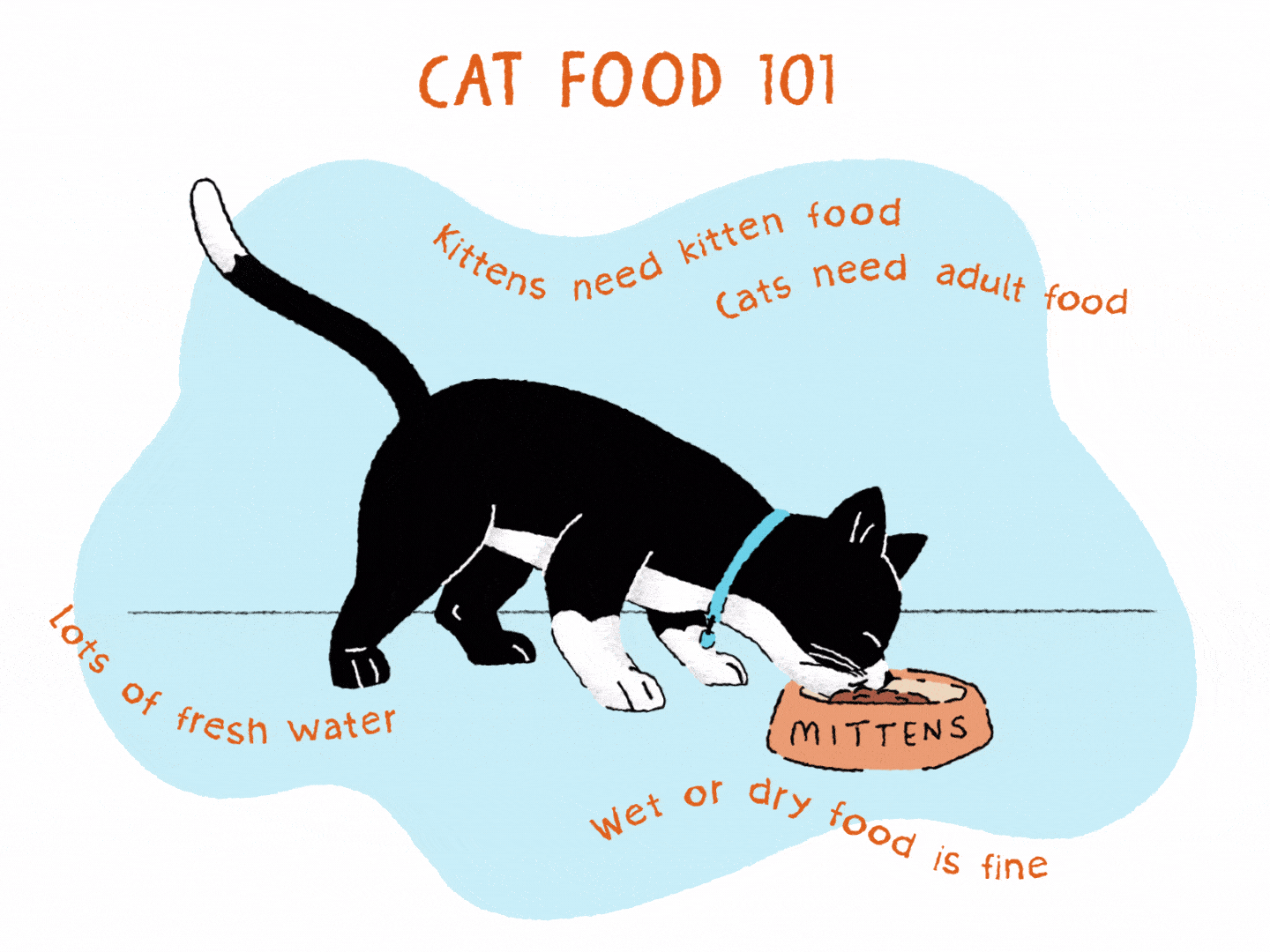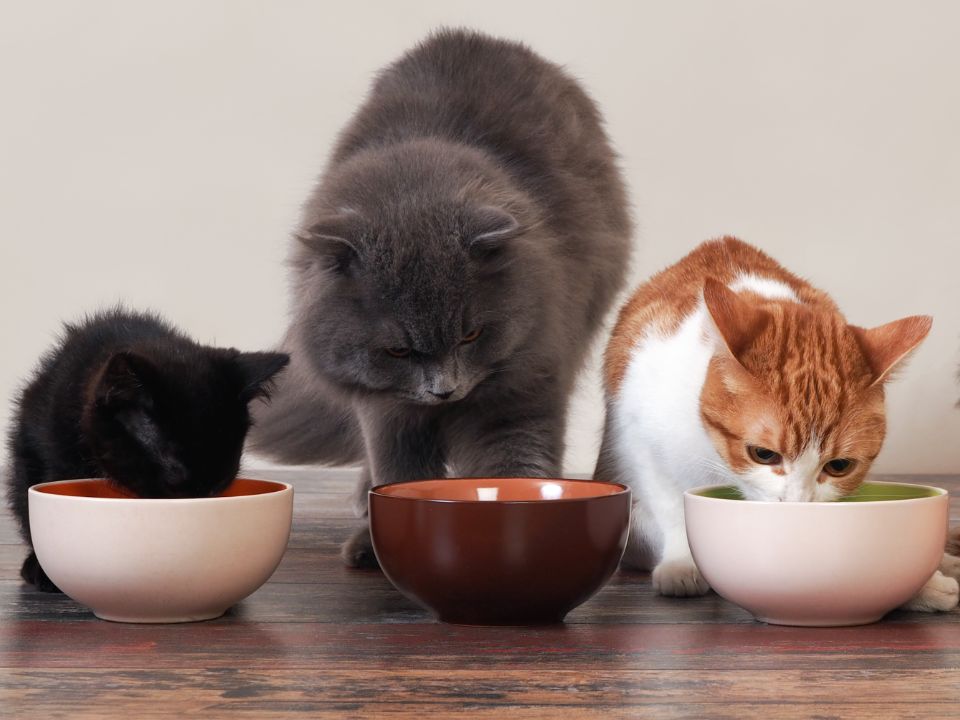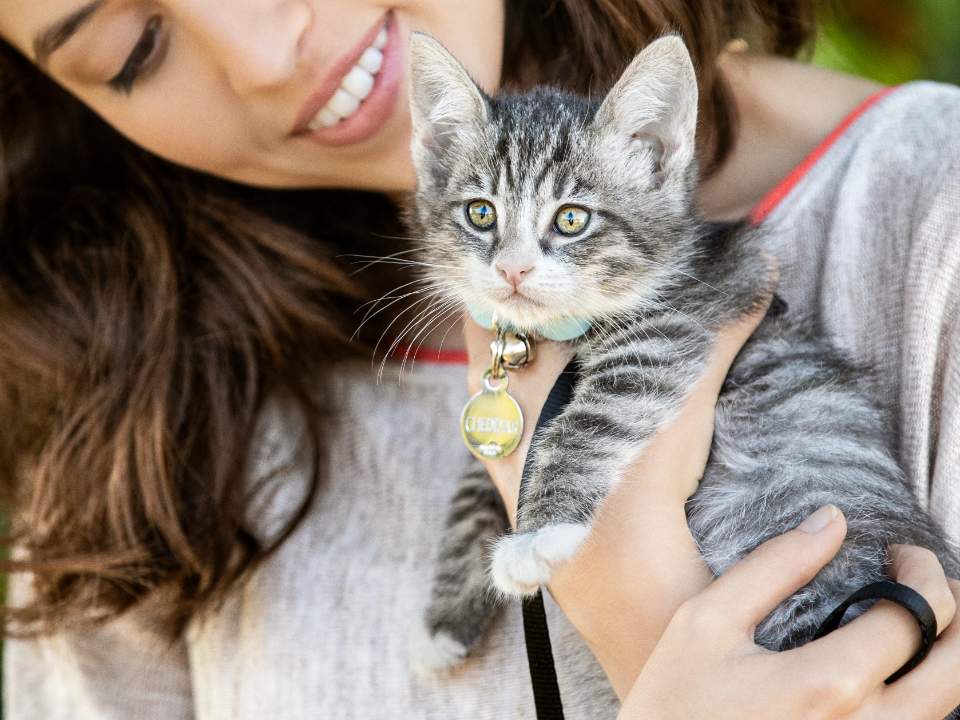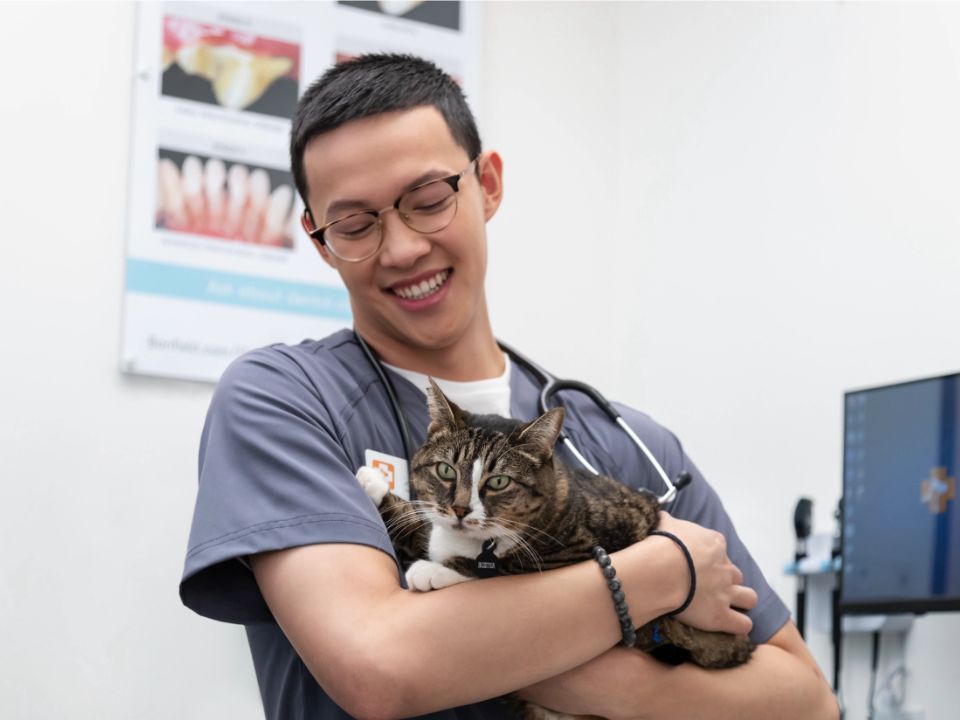vet-recommended cat food tips
What to know about picking cat food for your kittyBAE
With so many choices in the pet food aisle, it can be a bit overwhelming trying to figure out what to feed your cat. Wet food versus dry food? Kitten food versus cat food? What if you think your cat has food allergies? Our vets have assembled answers to your top questions to help make choosing a kitty food just a little bit easier.

How to feed kittens vs cats
Can kittens eat adult food?
Kittens need special kitten food — adult cat food just isn’t designed for kittens. At about 4-6 weeks old, kitties are weaned from their mamas. As they stop nursing, you’ll need to step in and help by introducing a new supply of steady calories. Quality kitten food is highly nutritious and energy-dense so your baby kitty gets the fuel they need to keep pouncing, bouncing, and growing.
For good health, we recommend your kitten only eat food that’s designed for kittens. By the time they are 6-8 weeks old, feed them three to four small meals throughout the day, and give them 24-7 access to fresh, clean water. (Tip: Keep the food bowls a respectable distance from the kitty litter — cats can be fussy about eating where they poop.)
Even though your kitten needs calories, make sure you’re not overfeeding them. Overeating can make cats prone to obesity, and carrying around too much weight is a serious physical problem that can affect your cat’s entire body. See more about healthy pet weights

When to switch from kitten to cat food
Ask your veterinary team when they recommend making the switch from kitten to cat food. This typically happens when your kittyBAE is around 12 months old. At this stage, they’ve pretty much stopped growing and need fewer calories in their diet.
When you switch foods, you can help avoid tummy upset by gradually replacing kitten food with the new adult food over the course of a week or so. Start with 25% new food to 75% kitten food, building up to 100% new food after a few days. Be sure to check the recommended serving sizes! Adult cats need fewer meals and calories per day.
When your cat reaches around 8-10 years of age, your veterinary team may suggest switching to a quality senior cat food designed to help support your cat’s needs as they age. Depending on your cat, your veterinary team may recommend a food that’s easier to digest, more calorie-rich, or that includes special supplements for joint health and other issues.
No matter your cat’s age, you can help them to stay happy and healthy by feeding them a quality diet. This can be wet food, dry food, moist food, even a mix of foods. The most important thing is making sure your kittyBAE is getting the balance of nutrients they need to fuel their furry, purry kitty body. See more about choosing a quality pet food

Answers about veterinarian-recommended cat food
Wet vs dry cat food?
Choosing a wet food or a dry food is something to discuss with your veterinary team. Both wet and dry cat foods can deliver quality nutrition. Some cats prefer the taste of wet food, which has a lot of water in it. Other cats are perfectly happy with dry kibble, which is more nutritionally dense. You can also give your cat a balance of the two to help tempt finicky eaters with different textures and smells. See more about reading food labels
Homemade, raw, healthy cat food?
Cats need an ideal balance of nutrients to keep them healthy. It might seem simple to plan a cat menu, but please consult your veterinary team before you begin. You want to make sure you’re providing the right foods in the right amounts. Plus, if you choose a raw food diet, you’ll also want to know how to avoid health risks like bacteria and parasites.
Many owners like to feed their kitties a holistic, organic, or natural diet. Before you spend your money, it can help to know what those words actually mean in the pet food world. For example, “holistic” is a great term that means a food will affect your cat’s entire body. But since all food affects your cat’s body, you still need to check all the boxes to make sure it provides quality nutrition.
How much should I feed my cat?
To figure out how much to feed your cat, check out the recommended daily serving size on your cat food label. Then split that amount by the number of meals you plan to serve. For example, kittens need their daily food amount split up into many smaller meals each day. Adult cats may just need 2 meals, one in the morning and one at night. Are you serving food once a day and letting your kitty graze? Simply stick to the recommended daily serving size each day.
You should also count treats as part of your cat’s daily calorie count. Treats can pack a whopper of a calorie load, so try to keep the size and number down. You really want your cats getting their calories from their quality food, which includes balanced nutrition, and not their nummy treats. See more about cat treats
Want a complete rundown on diet and nutrition for pets, including how to read labels and how to choose a quality food for your kitty? We’ve got you covered. Visit our diet and nutrition hub
Common questions about feeding cats
Can cats eat dog food? What foods are toxic to cats?
A few bites of dog food won’t hurt your cat, but your cat can’t eat dog food as a regular part of their diet. Dog food is formulated for dog bodies, and doesn’t have the right amount of taurine, an essential amino acid that a cat body needs to function properly. Plus, you never want to feed your cat any kind of people food or medication. For example, grapes and Tylenol are lethal to cats. Cats can also be poisoned by many household plants, ordinary cleaning chemicals, and more. Foods cats should never eat
What are cat food allergy symptoms?
Cats typically manifest allergies on their skin. The main sign of an allergic intolerance is chronic itchiness, which can lead to red and thickened skin, hair loss, and sores. Unfortunately, these symptoms aren’t always caused by food — cats can be allergic to pollen, mold, dust mites, fleas, and more. Reach out to your veterinary team if you have concerns. We can help to find the cause of your cat’s discomfort and suggest ways to help your kittyBAE be more comfortable. See more about skin signs and symptoms
Why is my cat throwing up food?
Cats barf for many reasons, including getting rid of hairballs, grass, or other stuff they can’t digest. Cats also do something called regurgitation, which is when they eat too much, too fast, and gag it right back up.
However, it is not normal for your kittyBAE to be throwing up on a regular basis. Look for danger signs like blood in the vomit, vomiting multiple times a day, weight loss, and diarrhea or constipation. These all need quick medical attention from your veterinary team.
How long can cats go without food?
Cats need a regular feeding schedule with a quality cat food and access to lots of clean water. Without food or water, their body systems can start shutting down — a medical emergency that needs immediate care. If your cat refuses to eat or drink for 12 to 24 hours, contact your veterinary team. Your cat may have an illness or injury that needs medical care.

How Banfield can help
Need help figuring out what to feed your kittyBAE? Do you have concerns about their diet, suspect a food allergy, or have other issues that need veterinary care? Please reach out to your veterinary team. Many kitty health issues can benefit from specific diets. Specific cat foods are designed to support issues like hairballs, joint health, diabetes, and more. We’re here to work with you to find a solution for you and the cat you love.
 Mites and mange
Mites and mange Podcast - Not Just Fluff
Podcast - Not Just Fluff
